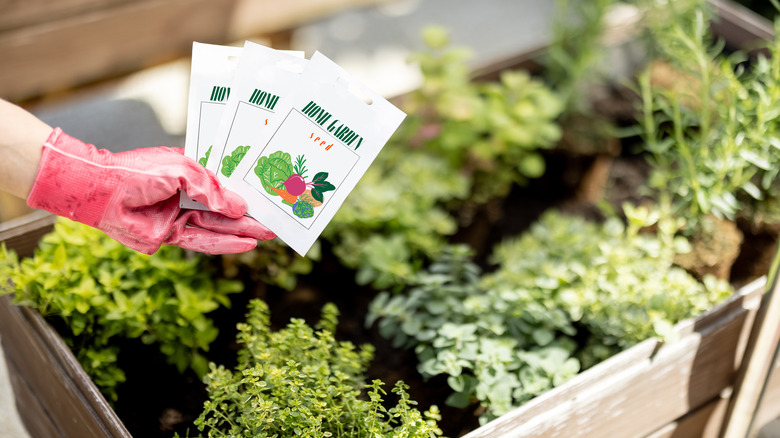Germinating seeds for your garden can be tricky, especially for beginners who may not be familiar with the steps or needs of individual plants. Environmental conditions like temperature, moisture, and light play the most important roles in successfully starting seeds for your garden. Different types of seeds, however, may require specific conditions, such as cold seed stratification or exposure to fire, to break their dormancy and allow them to begin growing. Improper planting depth, soil composition, or pH levels can also hinder germination, so following the directions on the seed sachet is essential to give your plants the best starting chance. Additionally, pathogens, pests, and competing vegetation can pose further challenges, affecting seedling establishment. Nevertheless, if you’re trying to grow peppers this season, consider giving them a push by popping them in the freezer first.
According to TikTok, putting pepper seeds in the freezer before planting them can improve germination rates due to cold stratification. This method mimics the natural conditions seeds experience during winter, breaking dormancy and triggering germination. In the freezer, seeds undergo a cold period, which helps weaken seed coats and activate enzymes essential for germination. This process is particularly beneficial for seeds that have hard outer coatings, like pepper seeds. Freezing can also help synchronize germination, leading to more consistent and rapid sprouting when the seeds are planted. Subjecting pepper seeds to cold stratification can enhance germination rates and promote healthier seedling growth.
How to freeze and thaw your pepper seeds
@tada.greenhouse
Garden Trick. Starting Pepper Seeds #raisedbedgarden #gardening #gardeningtips #fyp
♬ original sound – TaDa Greenhouse
To improve germination rates of pepper seeds through freezing, start by collecting fully ripe and healthy pepper fruits from which to harvest seeds or use store-bought pepper seeds. Choose fully ripe peppers, as their seeds are more likely to be mature and viable. Then, to initiate the cold stratification process, place the labeled envelope or container in the freezer. Ensure the seeds are stored in airtight packaging to prevent moisture absorption during freezing, which could damage the seeds as water expands when frozen. Leave the seeds in the freezer for at least 24 hours, although some gardeners opt for longer durations, up to two months, depending on the pepper variety and desired germination results. After the cold treatment period, carefully remove the seeds from the freezer. The TikTok video recommends thawing them in warm water for 30 minutes and then proceeding to plant them.
To do so, prepare a seed-starting tray or small pots filled with a well-draining seed-starting mix. Moisten the soil slightly before planting to ensure adequate moisture levels for germination. Plant the pepper seeds about a 1/8 to 1/4 inch deep, spacing them evenly apart to allow room for growth. Gently cover the seeds with soil and lightly pat down the surface to ensure good soil-to-seed contact. Give the seeds another good misting, then place the seed tray or pots in a warm location with indirect sunlight and wait for your pepper plants to grow.
Cautions for trying this method

While using the freezer to jump-start cold stratification might seem like a convenient shortcut, it’s not universally suitable for all types of seeds. It can actually damage certain types of plants. Cold stratification mimics the natural conditions seeds undergo during winter, where they experience a period of cold temperatures to break dormancy and stimulate seed germination in your garden. However, freezing temperatures in a standard freezer can be too harsh for many seeds, causing cell damage or even death. Some seeds are adapted to withstand freezing temperatures, but others are not. Seeds with delicate embryos or thin seed coats may be susceptible to damage in the freezer. Additionally, seeds of certain species have specific requirements for cold stratification. Some may require fluctuating temperatures rather than a consistent cold environment.
The refrigerator can be a gentler option for cold stratification, providing consistent but mild temperatures needed for successful germination. Refrigerators typically maintain temperatures between 35 to 40 degrees Fahrenheit, which is closer to the optimal range for a chilling period before germination without risking freezing damage. Plants like native wildflowers, certain tree species, and perennial herbs often benefit from cold stratification. However, it’s essential to research the specific requirements of each type of seed before attempting cold stratification, as improper treatment can reduce germination rates or even prevent seeds from sprouting altogether. Always follow recommended guidelines, usually included on a purchased seed packet, for seed stratification to ensure the best chances of success.



